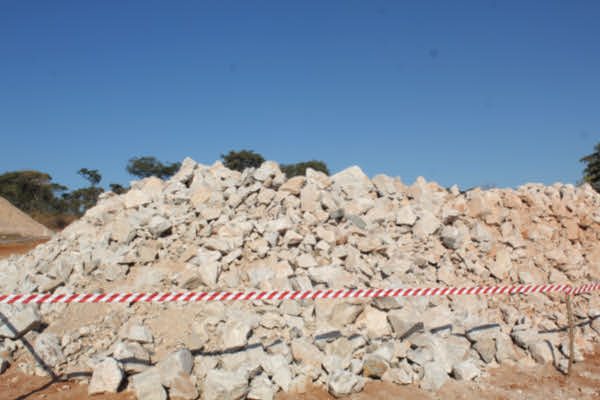Lithium ignites prosperity spark

The commissioning of the pilot plant at the Arcadia Lithium Mine near Harare is another large step forward in the growth of Zimbabwe’s mining sector and providing a useful and valuable export product, more jobs in the mining sector and diversifying mineral production that will allow Zimbabwe to flourish in a sector with incredible cyclic prices.
The hard rock formations containing both lithium-aluminium silicate minerals, petalite and spodumene, are among the largest in the world. Lithium minerals at commercially exploitable concentrations tend to occur in fairly small deposits which is why a fairly small area of Zimbabwe is rated so highly.
In recent decades, the large brine deposits, concentrated where Peru, Chile and Bolivia meet, took over large sections of the growing global markets, but the advances in lithium ion batteries since their first commercial production in the early 1990s, and especially the technology demands for the electric car businesses, put a premium on the product from hard rock deposits.
The low-iron hard-rock lithium minerals from Zimbabwe are saleable at a profit even when prices are volatile, and lithium is a mineral that has seen prices double and halve during a year. Prices, as consumption rises, are expected to be far more stable and gradually rise.
The miners are planning to process the ore they dig out of the open cast pits right down to the basic pure petalite and spodumene crystals, through a double process, although Prospect Resources has already done work on extending this to producing lithium carbonate.
The processes will also allow a useful amount of tantalum, a valuable metal that is used to make the micro-capacitors in many electronics, to be recovered, adding yet another mineral to Zimbabwe’s production list.
Economically, there are a number of important points to note. While Prospect Resources had been investigating the ore body, it was not until the Second Republic and the moves to making Zimbabwe open for business that caused the company to start sinking money into the future mine.
The full national project status, and then the rapid results initiative, have been clearly stated by the company as critical to moving into the investment stage.
The groundbreaking was done in 2018, Prospect lined up its partner investor, the delays of Covid-19 have been overcome and the pilot plant is now operating.
This shows that Zimbabwe has been delivering when it offers to help ease the path for a serious investor.
The special help was not totally open-ended; some time limits were put in place.
But those were just there to separate out the serious investors from the speculators and Prospect has shown itself a serious investor from the beginning.
We can now confidently expect the mine to move into full production fairly quickly and this sort of promise keeping will be yet another good advertisement for Zimbabwe’s investment drive.
Lithium was mined in Zimbabwe, in the Bikita area, in the days when most petalite went into the glass industry, but that died out in later years and was never really a high-grade operation, largely just exporting modest amounts of raw ore.
Now the mineral will move onto the bigger list, with at least all the initial processing done in Zimbabwe, right down to the level where the minerals are exported in sealed bags, and with the possibility that the final salts will be processed here as well.
We need to keep that possibility of final processing live and be ready to continue making business easier in Zimbabwe although many manufacturers like to take the pure mineral and do the processing in their battery factory themselves.
The other important point is the widening of the range of minerals Zimbabwe produces. We have all seen the cyclic nature of some economies, with oil producers perhaps the most obvious, when a country is reliant on just one or two commodities.
For around a century Zimbabwe has lived on gold and tobacco for far too high a percentage of its exports.
While no one wants those cut, in fact production needs to be expanded, adding large amounts of other commodities and goods not only increases the size of the economy, it builds in ever larger stability.
Base metals, largely nickel and chrome, helped that diversification, and platinum and diamonds were a major boost, especially as platinum is largely an industrial metal required as a catalyst in many processes, but with rising demand coming from the requirement by ever more countries wanting clean exhaust gases from cars.
Lithium is a metal of the future. An electric car needs around 10kg of the stuff for its battery pack, with advances in technology being pushed into making the batteries better, safer and lasting longer rather than in reducing them in size.
And when the world switches from petroleum to electricity for vehicles, and this will be well advanced by 2030 and probably complete by 2040, we are talking about one billion vehicles. And, however, you do the sums and open up recycling businesses, 100 million tonnes of lithium is a lot of lithium.
We will pick up some more money from electric car batteries, since the latest technologies suggest as much nickel as lithium, by volume, will be needed and we can easily dig some more out of the ground and sell that.
But no single new product is going to be the key. What will be the key will be a growing range of products, broadening our economy as well as growing it.
When our top 10 exports only amount to half our export earnings we will be a middle income country since we will have had to open far more mines, more factories and be growing a far wider range of crops.
And every addition will be adding to our national wealth, creating good jobs, opening more decent businesses and generally making us a better country.


